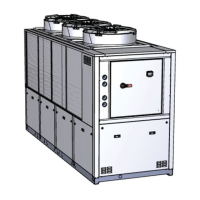Why is the ICS iC 410 tank water outlet temperature too high?
- NNicholas DavisAug 8, 2025
If the tank water outlet temperature (BTWOT) of your ICS Chiller is higher than the prescribed value, it could be due to several reasons. First, the thermal load might be too high; in this case, try to restore the thermal load to the prescribed limits. Secondly, the ambient temperature might be too high; if the unit is in an enclosed space, improve ventilation to reduce the ambient temperature to the recommended level. Also, check if the condenser fins are dirty and clean them if necessary. Ensure that the front surface of the condenser isn't blocked; if it is, remove the obstruction. Finally, it may be due to refrigerant fluid leak or compressor protection trips; in such cases, call a qualified refrigeration engineer to check for and fix any leaks and recharge the circuit.

